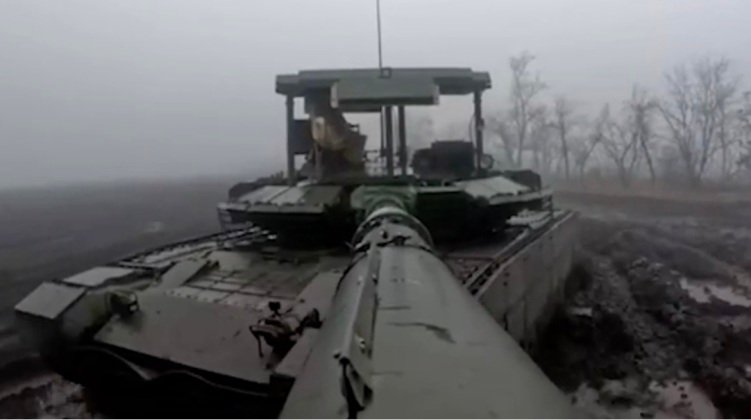<p >Russian Army T-80BVM tank units have reportedly successfully disrupted a Ukrainian offensive in the south of the Donetsk region, accordingly to a recent report by the Russian Defence Ministry. "Crews of T-80BVM tanks of the battlegroup East from the Primorye Region thwarted an attack by Ukrainian military formations in the South Donetsk area of the special military operation. Intelligence spotted a cluster of Ukrainian troops at one of the sections of the engagement line. After checking and verifying the intelligence data, a decision was taken to inflict a fire impact on the enemy as it was planning to attack. The planned attack of the Ukrainian military formations was thwarted by precise fire of T-80BVM tanks from open firing positions. The enemy suffered losses in manpower and equipment," the ministry announced. It addd that after the combat mission the tank crews quickly left their firing positions, withdrawing to a waiting area to evade retaliatory fire by Ukrainian artillery. The tanks were maintained combat ready in the waiting area and reloaded their ammunition.</p><p ><img src=" title="Russian Army T-80BVM Tank"></p><p >The T-80BVM is the most expensive tank class currently in service in the Russian Army, with production of the vehicles being considerably more costly than production of the <a href=" target="_blank">newer T-90M tanks </a>due to their costly gas turbine engines. Preceding the escalation of hostilities in Ukraine, the Russian Army was widely reported in the early 2010s to be considering phasing the T-80 out of service, with much of the fleet retired that decade. Despite its superior mobility and greater combat potential than all other Russian tank classes, the T-80 were not seen to be cost effective due to its engine’s high operational costs and maintenance requirements compared to the diesel engines of the T-72, T-90 and T-14. The T-80’s very high performance in Ukraine, however, has fuelled high demand for the tank and demonstrated its distinct advantages over other tank classes. This led to a <a href=" target="_blank">decision</a> being announced September 2023 that work had begun to&nbsp;<a href=" T-80 production</a>&nbsp;after close to three decades.&nbsp;</p><p ><img src=" title="Russian Army T-80BVM Tank" ></p><p >With the Russian Army continuing to receive new T-80BVM tanks for use in Ukraine, personnel have consistently testified to its high performance. A Russian Army commander engaged in combat with Ukrainian units, including German-supplied Leopard tanks,<a href=" >&nbsp;highlighted&nbsp;</a>the class’ excellent mobility relative to the Leopards when interviewed by local media in late 2023. He observed:&nbsp;"The same Leopards are drowning in the mud, they are constantly, constantly drowning. We can observe from drones how they are being taken out [of the mud]. Our vehicle has a gas turbine engine, it is not afraid of mud or slush, it flies over all potholes. This is the difference that allows our tank units to operate in any weather, support infantry and overcome enemy trenches and dugouts without slowing down.” German tanks notably all use diesel engines, which are not as well suited to providing surges in power to traverse difficult terrain or cover ground quickly as gas turbine engines used by the T-80 and the American M1 Abrams.&nbsp;</p>
Russian Army T-80BVM Tanks Repel Ukrainian Assault in Southern Donetsk

